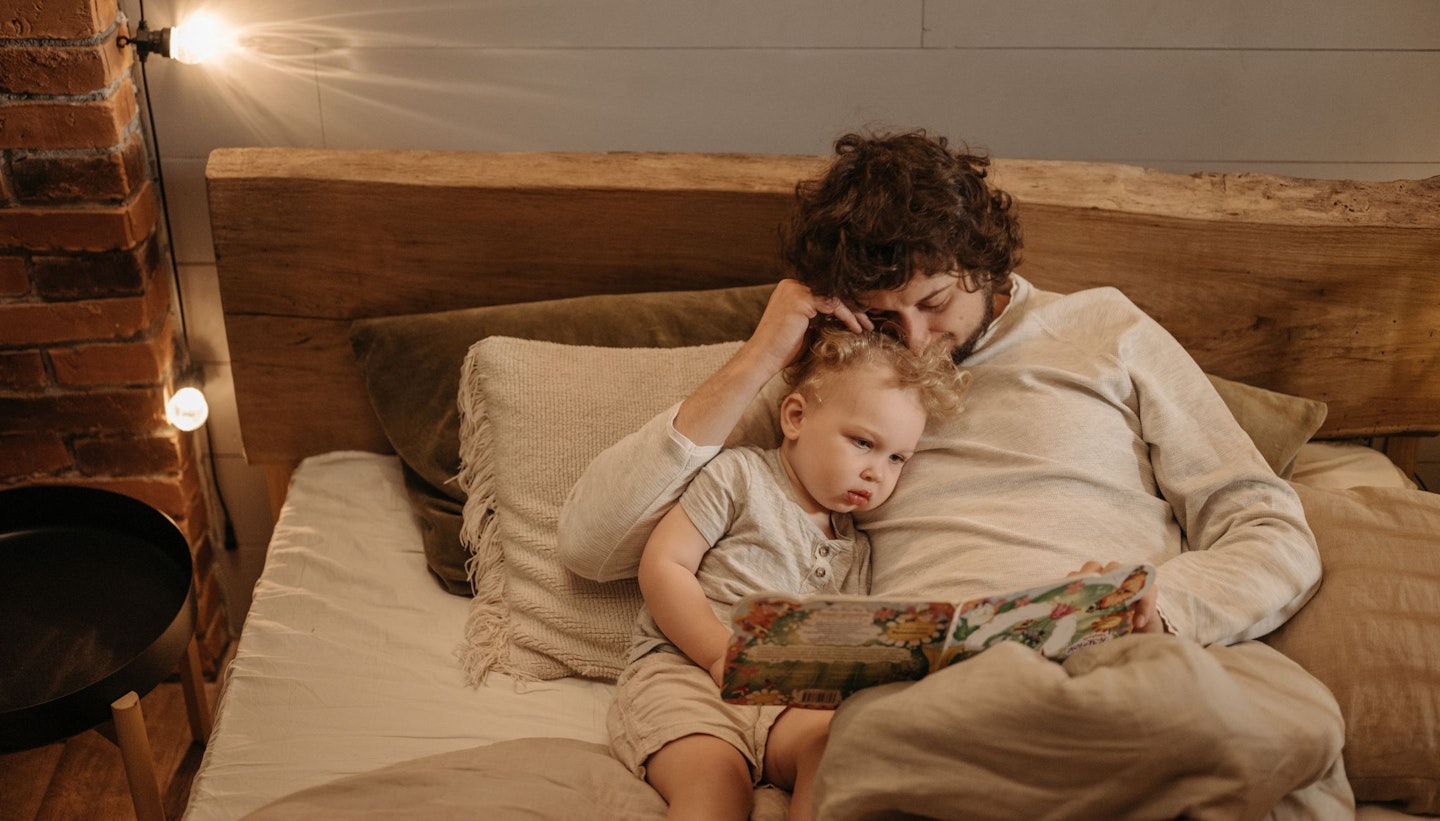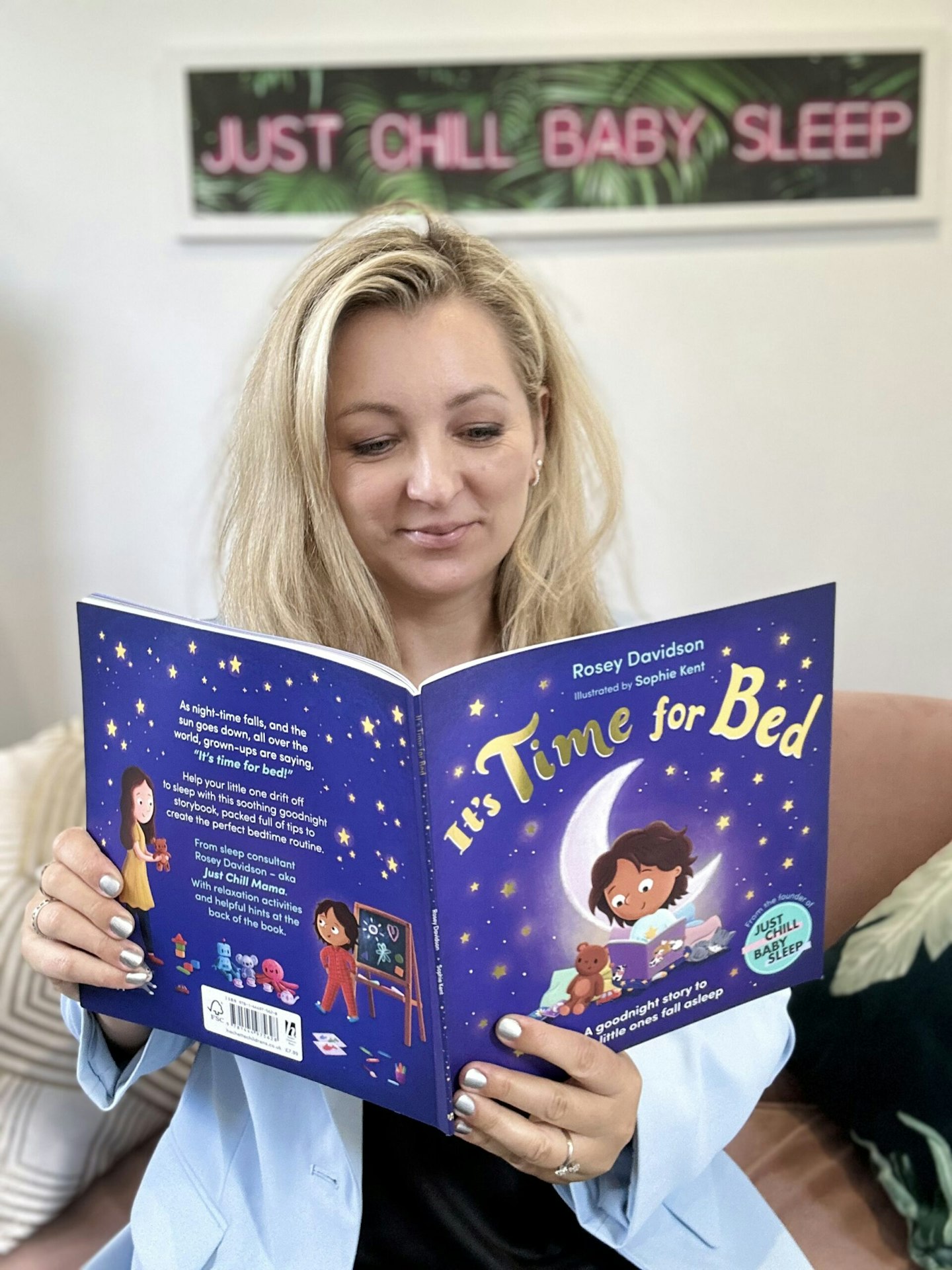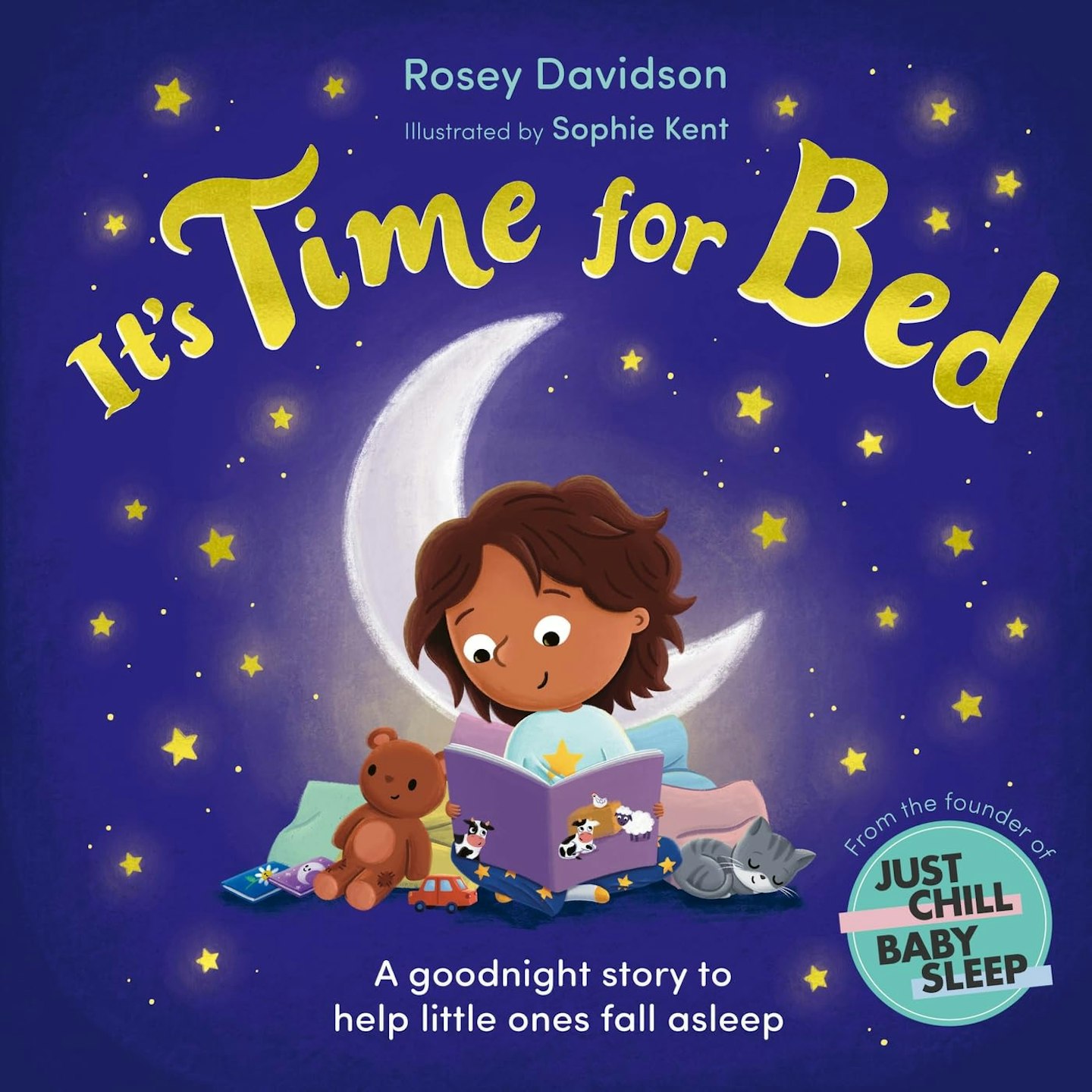Ask any parent of a two-year-old about bedtime, and you'll likely hear the same story—it's not always easy! Whether it’s your little one resisting sleep with extra energy or needing just one more cuddle before bed, winding down for the night can feel like a never-ending battle. So, when you hear about a viral hack claiming you can put your toddler to sleep in 40 seconds, it’s understandable that you’d want to try it ASAP.
But does it really work? And even if it does, is that really the solution to the nightly chaos? We caught up with Rosey Davidson, an infant sleep consultant and founder of Just Chill Baby Sleep, who just released her new book, It’s Time for Bed. She shares her expert thoughts on this viral trick and how it fits into creating a realistic, calming bedtime routine.
What is the 40-second sleep trick?
The 40-second sleep trick made waves online when a 2015 video by Nathan Dalio showing him and his wife putting their three-month-old baby to sleep with nothing more than a tissue went viral. The video now has over 14 million views, as Dalio explained:
"I'm sure every parent tries new things to put their little one to sleep. Watch as my wife and I put our three-month-old baby boy, Seth, to sleep in under a minute using nothing but a piece of tissue paper."
The method involves gently stroking your little one’s forehead with a tissue in a calm, repetitive motion. It’s a simple concept, based on the idea that light touch can have a soothing effect, helping children relax enough to fall asleep.
Rosey explains, "The trick works because it helps distract and calm the child. Gentle strokes on the forehead with a soft tissue can soothe the nervous system and help them wind down. It’s like a mini massage—calming, repetitive, and comforting." Sounds like magic, right? Well, it may work for some toddlers—but not all.
She reminds us, "Every child is different. While a viral trick like this might work on one child, another might still be bouncing off the walls. What’s more important is establishing a healthy, consistent bedtime routine that supports natural sleep."

Bedtime battles
If you’re a parent of a toddler, you know bedtime can feel more like a circus act than a peaceful wind-down. One study shows that 30% of toddlers have sleep issues, which means millions of parents face bedtime battles nightly. Whether it’s demands for snacks, the sudden urge to play, or outright refusals to get into bed, it can be exhausting.
You might try everything: more stories, less screen time, warm baths, lullabies—you name it. And while quick tricks like the 40-second method can help in a pinch, Rosey emphasises the importance of not just focusing on how quickly your child falls asleep but on creating a nurturing environment that promotes healthy sleep, "It’s not about finding a hack to make them pass out quickly."
She adds, "It’s more about creating a routine that helps them wind down naturally, feel secure, and ease into sleep without stress."

How to create a calming bedtime routine (without stress)
For parents with active, strong-willed two-year-olds, building a calming bedtime routine may sound like a fantasy, but it’s doable—and it doesn’t need to be complicated. Rosey, whose new book It’s Time for Bed is packed with practical bedtime advice, shares some simple yet effective tips to make bedtime less of a struggle and more of a bonding experience.
Here’s what she suggests:
-
Cuddles and massage: At this age, toddlers often need physical closeness before they feel comfortable separating at bedtime. Gentle touch—like back rubs or forehead strokes—helps calm their busy bodies and minds.
-
Storytime: Reading books like It’s Time for Bed can help ease the transition from the chaos of the day to the calm of night. A predictable, soothing story helps signal that sleep is coming, and many toddlers thrive on this kind of structure. “The repetitive, calming language of bedtime books gives them something comforting to focus on,” Rosey notes. More of the toddler books we love here.
-
Slow breathing exercises: “Help your child mirror your deep, slow breaths—it’s like a guided meditation for toddlers,” she suggests. These simple breathing exercises can help bring down their energy levels and prepare their bodies for sleep.
-
Light activity or stretching: Some toddlers have excess energy to burn off before they can settle. Light yoga, stretching, or rolling around on the bed can help release some of that pent-up energy while keeping the focus on winding down.
Rosey’s advice is simple but powerful: "Don’t rush the wind-down process. If we’re rushing, our kids can feel it. They want connection, especially before bedtime, and if we provide that, it makes the transition to sleep much smoother."
Common bedtime mistakes parents make
Even with the best intentions, many parents fall into common traps that can make bedtime harder than it needs to be. Here are a few things Rosey recommends avoiding:
-
Inconsistent routines: Kids thrive on routine. If bedtime is all over the place, their body clocks don’t know what to expect, which can make it harder for them to wind down.
-
Too much stimulation before bed: In today’s world, screen time is an easy go-to, but it’s a major bedtime disruptor. Even just 30 minutes of screen time can delay melatonin production, making it harder for your child to fall asleep.
-
Rushing through bedtime: It’s tempting to speed through the bedtime routine after a long day, but kids can sense when we’re in a hurry. Slowing down and spending those extra minutes connecting can make all the difference in how easily your toddler falls asleep.

Practical tips for a calming bedtime atmosphere
-
Dim the lights: Lowering the lights in the evening helps signal to your child’s body that bedtime is coming. Dim lighting encourages melatonin production, making it easier to fall asleep. If you are in the market for a dim light, here are the best ones.
-
Sensory cues: A warm bath, soft music, or a gentle massage with lavender-scented oil can help your child relax and transition into bedtime mode.
-
Connection time: Spend some quality, undistracted time with your toddler. Whether it’s cuddles, or just lying next to them for a few moments, this connection helps fill their emotional “tank” and makes it easier for them to fall asleep.
-
Bedtime story: Reading a calming bedtime book like It’s Time for Bed helps create a structured, soothing routine. The predictable nature of bedtime stories provides security and comfort, making it easier for children to settle down.
Rosey points out, it’s less about finding a viral hack and more about creating a consistent bedtime routine that works for your child. “Healthy sleep habits and routines are what will help you in the long run. These tricks are fun to try, but consistency, connection, and a calming atmosphere are the real keys to bedtime success.”
At the end of the day, whether you use a tissue or read a favourite story, your child’s bedtime should be about more than just getting them to sleep quickly. It’s a time to connect, unwind, and set the stage for peaceful sleep. As Rosey’s new book reminds us, bedtime is not just a routine—it’s an opportunity to create lasting, comforting rituals that help our children feel secure as they drift off into dreamland.


It’s Time for Bed by Rosey Davidson is the perfect guide for parents looking to make bedtime easier and more peaceful.
With a gentle story following things to do to calm and settle young children before bedtime, sleep consultant Rosey Davidson - aka Just Chill Mama! - is here to help you with a peaceful goodnight routine.
Packed with simple tips and tricks, this book helps you create a cosy bedtime routine that your kids will love. Rosey shares her knowledge from years of helping families, making it easy to turn your child’s sleep space into a relaxing retreat.
Whether you’re facing bedtime struggles or just want to make nights more enjoyable, this book gives you the tools to help your little ones drift off to sleep peacefully.
About the expert
Rosey Davidson is founder and CEO of Just Chill Baby sleep, an infant sleep consultancy focused on providing straight forward, no-nonsense sleep advice to parents. As a successful businesswoman and content creator with a large social media following (@just_chill_mama), Rosey gives an insight into her work as a sleep consultant, entrepreneur, and busy parent to her three young children, based in London.
About the author
Anne Lora Scagliusi is a Senior Digital Writer at Mother & Baby. She is a Scotland-based journalist with over a decade of international writing experience, specialising in women’s health, maternal mental health, and wellness. Her work has been featured in Vanity Fair, Marie Claire, and Glamour and has appeared on several Vogue global editions. She is mum to a one-year-old bambino and lives between Italy and the UK.
